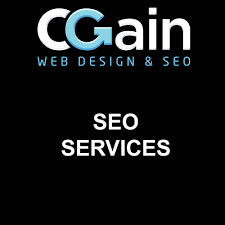
In the digital age, having a strong online presence is crucial for businesses looking to thrive in a competitive market. Two key components that play a significant role in achieving online success are web design and SEO services.
Your website is often the first point of contact between your business and potential customers. A well-designed website not only captivates visitors with its aesthetics but also provides a seamless user experience. From intuitive navigation to mobile responsiveness, web design encompasses various elements that contribute to user engagement and conversion rates.
Search Engine Optimization (SEO) is the process of improving your website’s visibility on search engine results pages. By incorporating relevant keywords, optimizing meta tags, creating quality content, and building backlinks, SEO services help your website rank higher in search engine listings. This increased visibility drives organic traffic to your site and improves your chances of attracting qualified leads.
Web design and SEO services go hand in hand to create a powerful online presence for your business. A visually appealing website that is also optimized for search engines not only attracts visitors but also ensures that they stay engaged with your content. By aligning your web design with SEO best practices, you can enhance user experience, increase site traffic, and ultimately boost conversions.
When selecting a provider for web design and SEO services, it’s essential to choose a partner who understands the intricacies of both disciplines. Look for a team that can create visually stunning websites while also implementing effective SEO strategies to improve your online visibility.
By investing in professional web design and SEO services, you can position your business for success in the digital landscape. Remember, your website is more than just an online platform—it’s a powerful tool that can help you reach new audiences, drive growth, and achieve your business goals.
Ensuring that your website is mobile-friendly is a crucial tip for improving SEO performance. With the increasing use of mobile devices to access the internet, search engines prioritise mobile-friendly websites in their rankings. A responsive design not only enhances user experience but also signals to search engines that your site is accessible and user-friendly across different devices. By making your website mobile-friendly, you can boost your SEO performance, attract more organic traffic, and provide a seamless browsing experience for visitors on smartphones and tablets.
Optimising your website’s loading speed is a crucial tip in web design and SEO services. A fast-loading website not only enhances user experience by providing quick access to content but also plays a significant role in improving SEO rankings. Search engines like Google consider page speed as a ranking factor, prioritising websites that offer a seamless browsing experience. By optimising loading speed, you can keep visitors engaged, reduce bounce rates, and ultimately boost your website’s visibility and performance in search engine results.
Creating high-quality, relevant content that incorporates targeted keywords is a fundamental tip for successful web design and SEO services. By crafting content that is both engaging for users and optimised for search engines, businesses can improve their online visibility and attract organic traffic to their websites. Including strategically chosen keywords in the content helps search engines understand the relevance of the page to specific queries, ultimately enhancing the site’s ranking in search results. This approach not only benefits SEO efforts but also enhances user experience by providing valuable information that meets the needs of the audience.
Utilising descriptive meta tags and alt text for images is a valuable tip in the realm of web design and SEO services. By incorporating relevant keywords and concise descriptions in meta tags, websites can improve their visibility on search engine results pages. Additionally, providing alt text for images not only enhances accessibility for visually impaired users but also offers search engines valuable information about the content of the image, further boosting SEO performance. Implementing these practices not only enhances user experience but also strengthens a website’s overall SEO strategy, ultimately leading to increased online visibility and engagement.
Incorporating responsive design into your website is a crucial tip for enhancing user experience and improving SEO performance. By ensuring that your site is optimised for various devices, including smartphones, tablets, and desktops, you can provide a seamless browsing experience for visitors regardless of the device they are using. This not only increases user engagement but also boosts search engine rankings, as search engines like Google favour mobile-friendly websites. Embracing responsive design is key to attracting and retaining users, driving traffic, and ultimately achieving online success.
Regularly updating and maintaining your website is essential to keep it relevant and functional for both users and search engines. By consistently refreshing your content, fixing any technical issues, and staying up-to-date with SEO best practices, you can ensure that your website remains a valuable asset that attracts visitors and ranks well in search engine results. This proactive approach not only enhances user experience but also signals to search engines that your site is active and trustworthy, ultimately contributing to improved visibility and engagement.
By incorporating social media integration into your website, you can enhance user engagement and increase traffic to your site. Integrating social media platforms allows visitors to easily share your content, products, or services with their networks, amplifying your online presence and reaching a wider audience. This seamless integration not only encourages interaction with your brand but also improves visibility on social channels, ultimately driving more traffic and potential leads to your website.